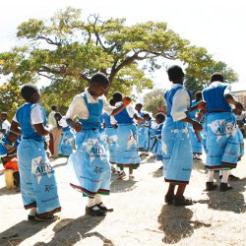As chair of the board of trustees of international child rights charity, EveryChild, Nadine Nore often wonders about the following: should the principle of child participation extend to the board itself and to what extent should and can the board reflect the constituency which the organisation seeks to serve?
A well-balanced board made up of a varied set of skills, experience, diversity and personalities is probably what every charity aims to achieve. In reality surveys into the composition of the average UK-based charity board suggest a far narrower profile and often cite the challenges of recruiting more broadly for reasons to do with availability, the particular expertise required at a given time and the appeal in particular to a younger demographic. Boards often bring skills and experience but far less commonly a mix of ages and background.
This isn’t an issue unique to this sector. A criticism often levelled at the media industry from which I come is that those in a position to determine what it is people watch for their entertainment are often not representative of their target audience. In fact far from it, principally given the way media is increasingly being consumed in particular by the increasingly elusive young demographic so beloved of the advertisers.
The Charity Commission’s study of young people as charity trustees A Breath of Fresh Air (Sept 2010) found that the average age of a trustee in the UK is 57. Out of the total number of 810 000 UK based trustees, 0.5 percent are in the 18 to 24 age group and fewer than 30 are under 18.
Having been lucky enough to visit some children’s projects in the field, some of the most insightful and astute observations I have heard have come from the children themselves. As we get older, and in the process of socialisation, we lose the ability to speak directly and learn instead to couch phrases and to mask our real intentions. A child will tell it like it is, refreshingly directly and no holds barred.
The United Nations Convention on the Rights of the Child talks about a child’s right to be heard and to participate in the decisions that affect them. The question then is what is the appropriate forum for this to take place in a way that is meaningful and not tokenistic and makes the most effective use of a charity’s resources given the support required to make it happen?
Whilst it would be mistaken to think of children as a homogenous group equally representative of their peers, The Breath of Fresh Air study found that young trustees recognised they were there, at least in part, to provide a voice for the young people in key decision-making.
Young people can challenge the status quo and bring new and innovative ways of thinking. As clichéd as this now sounds they can harness the possibilities offered by new technology and social media bringing a technological awareness and know-how of great relevance to any communications, advocacy and fundraising strategy.
Child participation and age-related board diversity are connected but different issues. Being a UK-based charity which operates purely internationally, it may not be practicable to involve the children the charity works with in the regular governance of the board. Indeed articles of association may also prohibit or limit membership of under-18s to the board.
The correct forum for a child
The challenge is creating the right forum for a child to be able to express their view freely. A formal board environment would probably not be furthest from what that needs to be. Children can express their views through other forms: play, song, dance and art for example. Involvement at a local level within an age-appropriate framework relevant to their particular situation and culture is likely to generate more meaningful outcomes. A number of organisations have found innovative and appropriate ways for child participation at this level through child parliaments, advisory panels, board adviser positions and working groups.
Children can also be involved at a local and programmatic level. EveryChild consulted with 400 children internationally in developing its conceptual framework and has children at the heart of its programming structure. Equally child participation and accountability are important criteria for any new partnerships it considers.
We need to keep a watching brief on this issue whilst continuing to aim for the recruitment of as diverse a board as possible. In the meantime the proliferation of new media platforms including social networking sites and mobile telephony and the high levels of usage of these platforms amongst the young offers unprecedented opportunities to communicate and engage. This offers another route for discussion and consultation with children.
In the meantime, collaboration with young people is a two way process. One of the recommendations of the Charity Commission’s report was to suggest that young people who join boards need support such as mentoring, clear board papers, good chairing involving active questioning and listening. Perhaps these are principles that those of us involved in the process of governance can all learn from.
Nadine Nore is chair of EveryChild
Declaration of interest: Dorothy Dalton (editor) is a trustee of EveryChild









